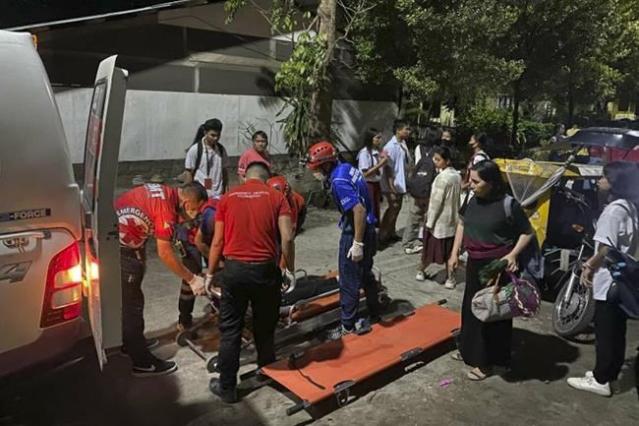According to the Philippine Seismology Agency, or PHIVOLCS, tsunami waves may begin to arrive in the Philippines at midnight local time, or 1600 GMT, and may last for many hours.
The European-Mediterranean Seismological Centre (EMSC) reported that an earthquake with a magnitude of 7.5 struck Mindanao, Philippines, on Saturday. The earthquake occurred at a depth of 63 km (39 miles), and tsunamis were predicted to strike Japan and the Philippines soon after.
According to the Philippine Seismology Agency, or PHIVOLCS, tsunami waves may begin to arrive in the Philippines at midnight local time, or 1600 GMT, and may last for many hours.
A little later, by 1:30 a.m. on Sunday (1630 GMT on Saturday), tsunami waves up to one meter (3 feet) high were predicted to hit Japan’s western shore, according to Japanese broadcaster NHK.
The U.S. Geographic Survey reported that the earthquake occurred around 10:37 p.m. (1437 GMT), with a magnitude of 7.6 and a depth of 32 kilometers (20 miles).
The Philippines, which is located on the Pacific “Ring of Fire,” which the US Geological Survey refers to as the “most seismically and volcanically active zone in the world,” experiences earthquakes frequently.
The European-Mediterranean Seismological Centre (EMSC) reported that an earthquake with a magnitude of 7.5 struck Mindanao, Philippines, on Saturday. The earthquake occurred at a depth of 63 km (39 miles), and tsunamis were predicted to strike Japan and the Philippines soon after.
According to the Philippine Seismology Agency, or PHIVOLCS, tsunami waves may begin to arrive in the Philippines at midnight local time, or 1600 GMT, and may last for many hours.
A little later, by 1:30 a.m. on Sunday (1630 GMT on Saturday), tsunami waves up to one meter (3 feet) high were predicted to hit Japan’s western shore, according to Japanese broadcaster NHK.
The U.S. Geographic Survey reported that the earthquake occurred around 10:37 p.m. (1437 GMT), with a magnitude of 7.6 and a depth of 32 kilometers (20 miles).
Eight people were killed by an offshore earthquake in the southern Philippines earlier this month, measuring magnitude 6.7.
The provinces of Sarangani, South Cotabato, and Davao Occidental were reported to have suffered fatalities from the November 17 earthquake, which also left 13 people injured. The tremor caused widespread panic and damaged over 50 houses and other structures.
The Philippines, which is located on the Pacific “Ring of Fire,” which the U.S. Geological Survey refers to as the “most seismically and volcanically active zone in the world,” experiences earthquakes frequently.
At 10:37 p.m., an earthquake with a moderate depth of 32 kilometers (20 miles) was recorded. Based on the size and position, the Pacific Tsunami Warning Centre predicted that tsunami waves would strike portions of Indonesia, Malaysia, and the southern Philippines.
Residents in the eastern Mindanao provinces of Surigao Del Sur and Davao Oriental were urged to quickly flee to higher ground or go inland by a Philippine government agency.
A strong underwater earthquake that struck the southern Philippines last month sent shopping mall ceilings plummeting to the floor as patrons cried out. There was no tsunami alert in force.
An investigation into a single death report was announced by the Office of Civil Defence. According to the US Geological Survey, the magnitude 6.7 earthquake occurred 26 kilometers (16 miles) south of Burias in the southernmost point of the Philippines. It stated that its core was 78 km below the surface.
“Based on the local tsunami scenario database, it is expected to experience wave heights of more than one meter above the normal tides and may be higher on enclosed bays and straits,” the Philippine Institute of Volcanology and Seismology stated in an alert for a tsunami. There will likely be a devastating tsunami with potentially fatal wave heights.
The first tsunami waves are expected to hit on December 2, 2023, between 10:37 and 11:59 p.m. (PST). It stated, “These waves might last for hours.”
